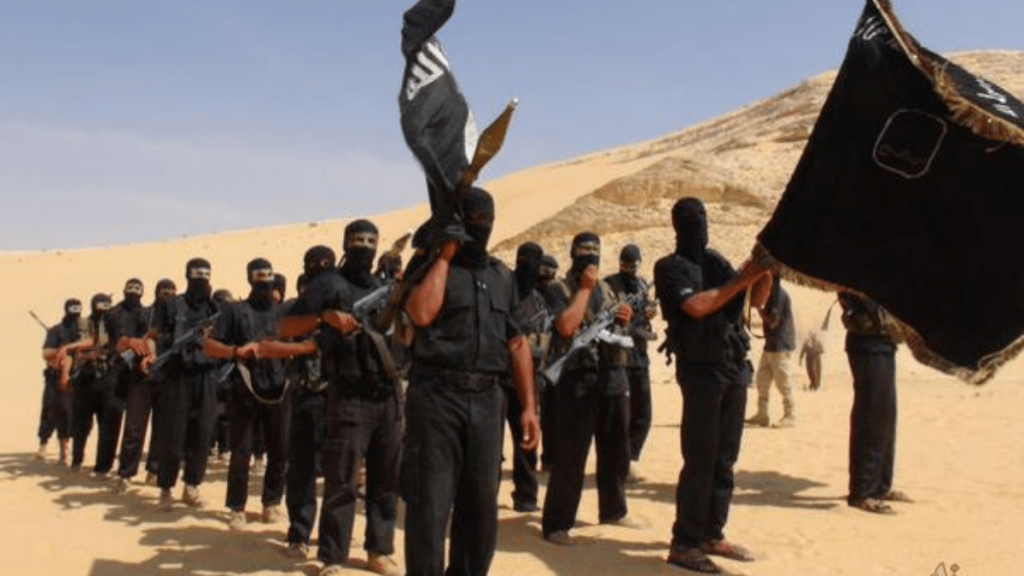The following footage took place in the Sinai where an ISIS insurrection has been taking place for the past five years. The video is shown from the perspective of an Egyptian Army vehicle as it hunts down an ISIS technical before security forces decked out in Egyptian camo surround the militants and take them down with a successful arrest.
Separate from the central branch of ISIS that operates in Iraq and Syria, ISIS Sinai are equally as dangerous. The group has murdered hundreds of local security personnel in Egypt. Similarly, they have launched multiple attacks on local and foreign civilians. In 2015, the terror group was behind the murder of Tomislav Salopek, a Croatian engineer who was working in Egypt before being kidnapped and beheaded.
ISIS in the Sinai Peninsula
Situated between the Red Sea and the Mediterranean Sea, the Sinai peninsula is a sparsely populated desert belonging to Egypt. Following the Egyptian revolution in 2011, the security situation in the peninsula deteriorated massively. It soon became a hotbed for a militant Jihadi group known as Ansar Bait al-Maqdis (Supporters of the Holy House) who launched a series of attacks on Israel and the Arab gas pipeline to Jordan.

Ansar Bait al-Maqdis was a combination of various indigenous Salafi jihadist groups in the Sinai. Many of whom were linked to Salafi jihadis in Gaza and al-Qaeda. It soon grew to become the most prominent militant group in the Sinai and was comprised of Egyptians, Bedouins, and various international fighters.
In 2013, Egypt saw then-president Mohamed Morsi deposed in a coup d’état. What followed was an intense crackdown on Jihadi groups like Ansar Bait al-Maqdis in the Sinai. Subsequently, this led to an increased number of violent Jihadist attacks on Egyptian security forces across the country as ABM began to shift their focus entirely on attacking Egyptian targets.

Following the formation of the ISIS caliphate in Iraq and Syria in the summer of 2014, Ansar Bait al-Maqdis sent representatives to Daesh territory in Syria. Their mission was to obtain financial support, arms, and military training. In exchange for this, the bulk of the group pledged an oath of allegiance to the leader of ISIL, Abu Bakr al-Baghdadi. The formation of ISIS Sinai, also known as Wilayat Sinai, the Sinai Province of the Islamic State, followed shortly after.
Evidence of military training provided to the group from ISIS in Syria was documented by Brian Fishman of the New America Foundation. In July 2015, ISIS Sinai attacked the town of Sheikh Zuweid. This large scale assault was thankfully repelled in gruelling battle with Egyptian security forces. In the aftermath, over ISIS 100 militants and 17 Egyptain soldiers were dead. The tactics used by the ISIS attackers incorporated suicide bombers comprised o direct and indirect fire support, mortar fire in combination with small arms, and simultaneous assaults in multiple locations. Such tactics were widely seen being used by ISIS in Iraq and Syria.
“ISIS-Sinai Province has become the terrorist group’s most effective branch in the Middle East.”
– YOAV ZITUN
The terror group then proceeded to launch a range of ruthless attacks across Egypt as well as a limited number of rocket attacks against Israel. The most infamous attack claimed by the group was bombing of Metrojet Flight 9268. On the 31st of October 2015, the Russian passenger jet was transferring 224 Russian holidaymakers to Saint Petersburg from the Sharm-el-Sheikh resort. A bomb smuggled on board detonated mid air, breaking up the aircraft and killing all on board.
Interestingly, the monitoring of terror groups in the Sinai is largely technological. This is due to the immense difficulty of using people to penetrate deep into such Jihadist networks. Groups like ISIS Sinai are operating in an enormous area that stretches about 30 thousand square kilometres in the centre of the largely mountainous Sinai peninsula. Such topographical conditions make photographing and tracking the training centres, headquarters and weapons stockpiles of the group very difficult. The group also operates on a high level of secrecy, making it difficult for intelligence services to even single out its real leader.













